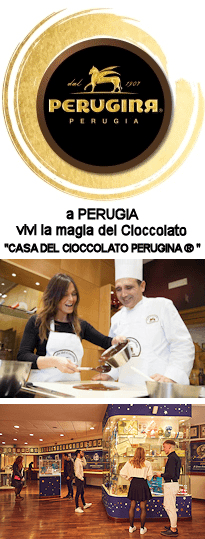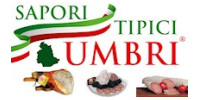The ceramics of Deruta, a small town clinging to a hilltop, are world
renowned. The origin of this production dates as far back as the Etruscans,
and fine ceramics were produced here in the Middle Ages. But it was
during the Renaissance that the art of Deruta reached its maximum
splendor, admired and sought after by the nobles of all of Europe.
Refined decorations and colours (gold, cobalt, white glaze) embellished the "piatti
da pompa", plates used for special occasions, the "coppe amatorie",
the gift of love on which female figures and romantic inscriptions were painted,
and the exquisite floor tiles.
Following centuries of decline, the ceramic tradition began to flourish again in
the 20th century, and now involves numerous workshops. This led to the
establishment of the Deruta School of Ceramics and the Regional Ceramics Museum,
which exhibits objects from the Middle Ages to the present, but the highlight is
the majolica floor of the Church of San Francesco.
A short distance from Deruta
is the village of Ripabianca, known for its glazed terrecotta produced according
to centuries-old methods.
Our network:
Monday 29 December 2025
The Ceramics of Deruta |

| THEMATIC HOLIDAYS | go |
• Ancient documents and illuminated manuscripts
• Renaissance Umbria
• Umbria the Poet’s Muse
• Umbria With the Kids: Perugia’s Città della Domenica
• Golf & Art in Umbria
| WINE AND FOOD | go |
• Typical Umbrian dishes
• Umbrian cuisine
• Typical Umbrian produce, where to buy and where to taste
• Typical Umbrian food
• Wine Tours in Umbria
• Umbrian Wines and Regional Wine Trails
• Enoteche, vinerie and wine bars in Umbria
• Umbrian Wines
• Wineries and wine tasting in Umbria
| ITINERARIES | go |
• Contemporary art in Umbria
• The female saints of Umbria
• Benedictine monasteries
• Ancient castles and fortresses
• Guided tours and itineraries in Umbria
| PARKS AND NATURE RESERVES | go |
• Lake Trasimene
• Parco Fluviale del Tevere
• Parco Regionale del Lago Trasimeno
• Parco Regionale del Monte Subasio
| WHAT TO SEE & DO | go |
• Cooking courses in Umbria
• The Nahar adventure park, enclosed within one of Italy 's largest alpaca farming areas, offers tourists the chance to spend a day experimenting new sports and generally having a good deal of fun in an unparalleled natural setting!
• PIERMATTEO D’AMELIA and the Renaissance in Southern Umbria
• FRANTOI APERTI Following the DOP Umbria quality olive oil trail
• Wedding in Umbria
• MAP of UMBRIA to travel in Umbria
• Tourist guides of Umbria
• Quality produce - sustainable success stories
• Oil mills and producers across the region Umbria
• Academies, Schools in Umbria and Italy
• Exhibition Perugino, divine painter
• Itineraries & Packages
| BEAUTY & WELLNESS | go |
• Wellness in Umbria: opportunities for tourists
• Spiritual Retreats in Umbria
• Dermocosmetici Oro of Spello for protecting your skin
• Wellness in Umbria
| SPORT | go |
• Paragliding and Hang-Gliding
• Horse Riding in Umbria
• Golf in Umbria
• Umbria by Bike
| WEDDING | go |
| MICE (MEETING INCENTIVES CONFERENCES EVENTS) | go |
• Company meetings in Umbria
• Venues and Entertainers for Events in Umbria
• San Gemini - Centro Congressi
• Park Hotel ai Cappuccini in Gubbio
• Events and Cerimonies in Umbria – Deals and Offers
• Conferences and Conventions – the Advantages of Choosing Umbria

| HANDICRAFT | go |
• Deruta Ceramics
• Cabinetmaking in Città di Castello
• Woodcarving in Umbria
• Ceramics in Umbria Art and Tradition
• The Ceramics of Deruta









